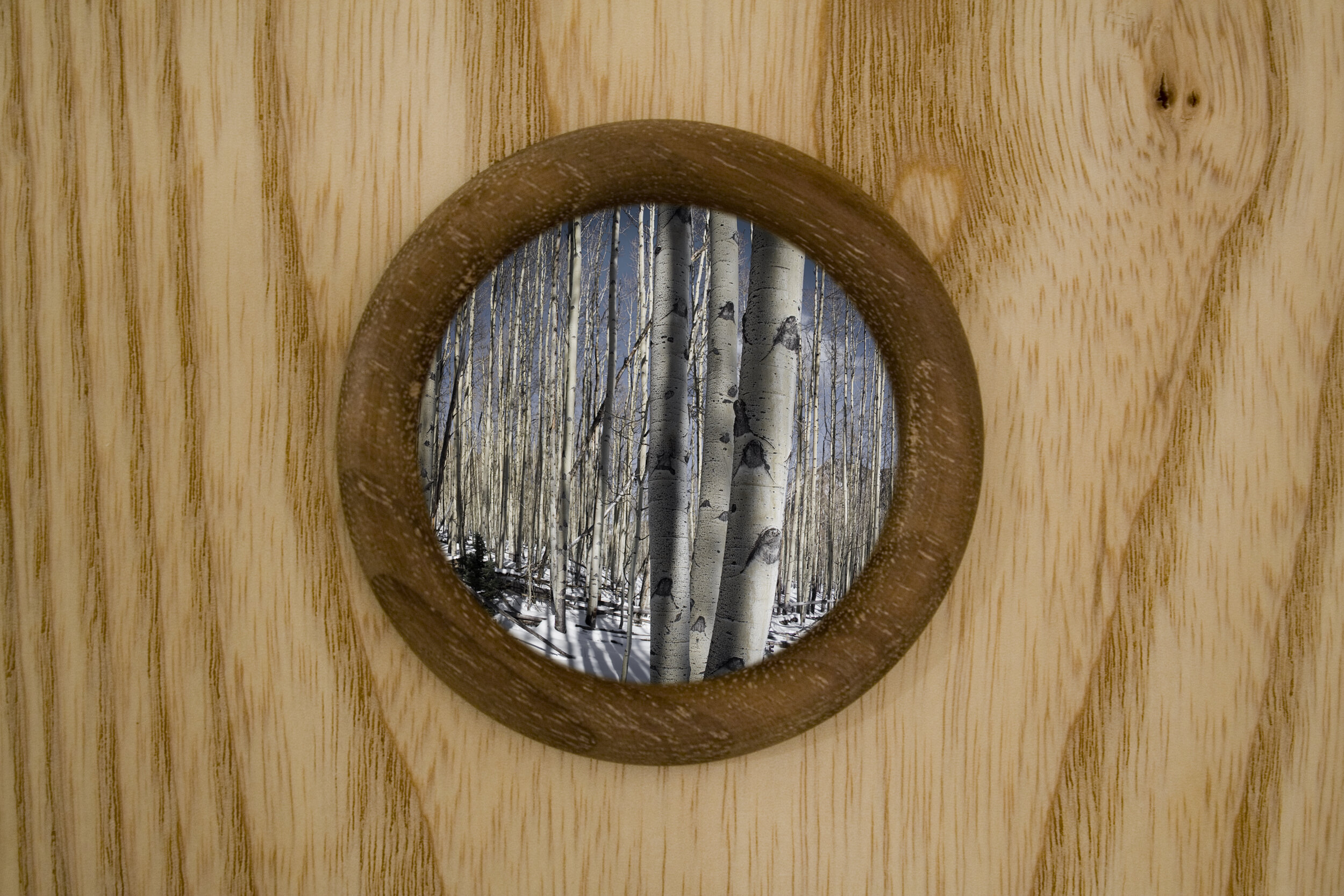Panopticon
2006


Paired cabinets made of ash, walnut, glass lenses and plexiglass with digital panoramas on film. H 60” x 36” x 30” and H 52” x 36” x 30”.
This piece was constructed far from the ocean, on the Continental Divide, at Anderson Ranch Arts Center just outside of Aspen in the Colorado Rockies. It consists of a matched pair of cabinets mounted on tripods. Each 12-sided cabinet is made of ash and walnut, and on each of the 12 sides is a lens that focuses the viewer’s eye onto a circular digital photographic transparency at the cabinet’s center. One shows a panorama of an aspen forest under snow. The other shows a macro view of the circumference of a single aspen tree. Aspens are clonal, and an aspen grove is usually a single genetic individual—one of the largest organisms on the planet. Panopticon presents two views of the same organism – one looking inwards, one outwards. By interacting withPanopticon, a viewer’s attention is focused both inward and outward. The digital images are contained and distanced so that the experience is both intimate and removed.
The word panopticon originally referred to a form of prison architecture with a central viewing hub from which all of the inmates could be viewed simultaneously. This structure was proposed by the extraordinary 19th-century British social reformer and philosopher Jeremy Bentham, whose embalmed body (self-titled Auto-Icon) is still on display in a glass-fronted cabinet at University College London.